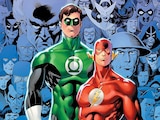“When did Lex Luthor first encounter Supergirl?”
“Why does Wonder Woman have an Invisible Jet when she can fly?”
“What’s the story with that giant penny in the Batcave anyway?
Hello! I’m Alex Jaffe, professional expert on the history and lore of the DC Universe and all of its infinite permutations—your personal Mobius Chair and Alfred Pennyworth rolled into the faceless visage you see before you. For the past two years, I’ve been answering hundreds of questions like those you see above for the DC Community, operating under the guise of “HubCityQuestion.” In this column, I’ll be addressing any and all of the greatest mysteries that you, my readers, need solved, simply by navigating to my office in our newly refurbished Community and joining the inquisitive chorus. For all the answers you seek, all you need to do is ASK… THE QUESTION.
THE BANE FROM SPAIN
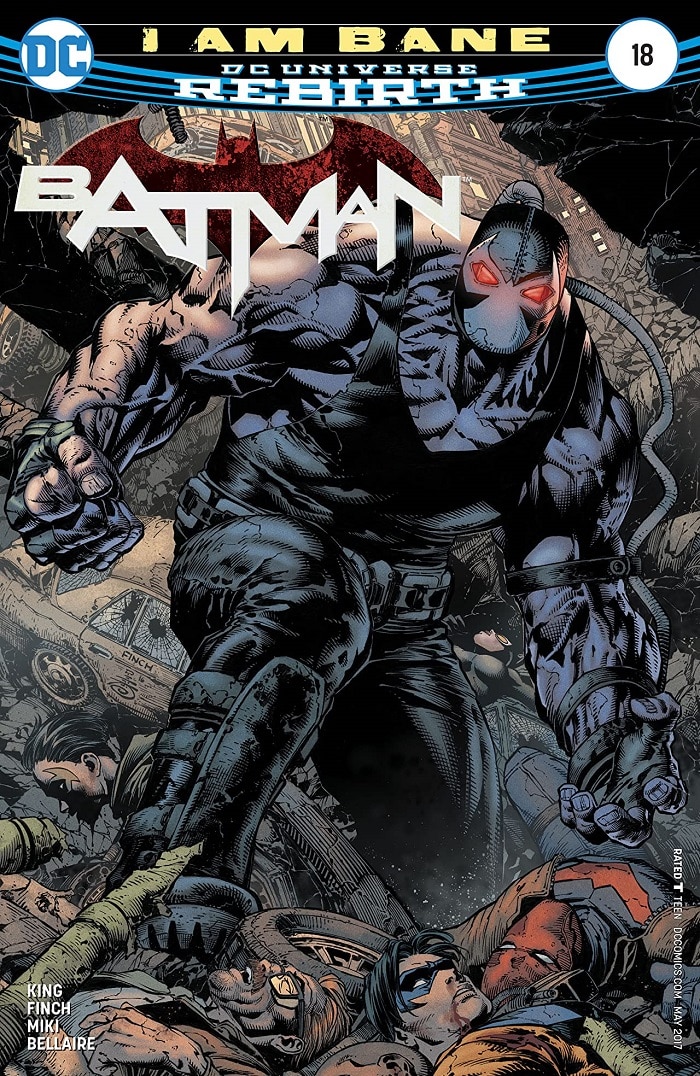
I_Never_Miss asks:
“What race is Bane? All movies cast him as white, and so does his origins. But I’ve heard he could also be Latino.”
Like many characters, Bane’s background is one that varies between interpretations.
In the film Batman & Robin, he was an incarcerated killer named Antonio Diego who’s turned into a henchman by Poison Ivy. The name given to him is latino in origin, but apart from that he is played by Robert “Jeep” Swenson, a Caucasian American wrestler. His background is actually more similar to a character named Ivor, a man who henched for Poison Ivy in 1982’s Batman #344, but Bane was a bigger name and got tagged in to take his place.
In The Dark Knight Rises, Bane is played by another Caucasian man, Tom Hardy, and whose background is as an international mercenary—a background which has less in common with the Bane we know from the comics than it does with the persistent Tim Drake villain Edmund Dorrance, aka King Snake. (More on him later.)
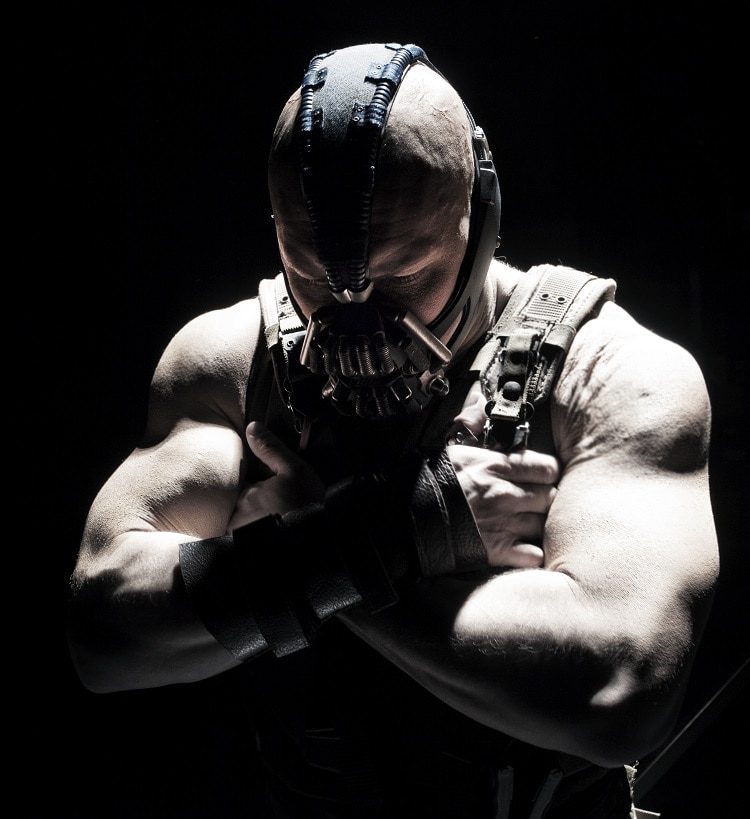
In short, both of Bane’s live action film appearances could be argued to not REALLY be Bane as we know him, but an even more obscure character bearing his name.
However, it’s not true that Bane has always been played by a white actor. In Bruce Timm and Paul Dini’s animated universe, Bane’s origin is as an inmate of a Cuban prison, and Latino actors were always cast to play him. He was portrayed in Batman: The Animated Series by Henry Silva, a Sicilian-Portuguese actor with a long, prolific career. And in Batman: Mystery of the Batwoman, Bane is played by Hector Elizondo, a Spanish-American actor.
In the 2004 animated series The Batman, Bane is explicitly a South American mercenary, and in his first appearance he is played by Portuguese actor Joaquim de Almeida. In Young Justice, Bane’s connection to the Latin American nation of Santa Prisca is fully realized, as played by Mexican-American actor Danny Trejo. Carlos Alzaraqui, an Argentine-American, plays Bane in the animated films Justice League: Doom, Batman Unlimited: Mechs vs. Mutants and Batman vs. Teenage Mutant Ninja Turtles. In Harley Quinn, Bane is played by Caucasian actor and comedian James Adomian, but come on: he’s really just doing an impression of Tom Hardy.
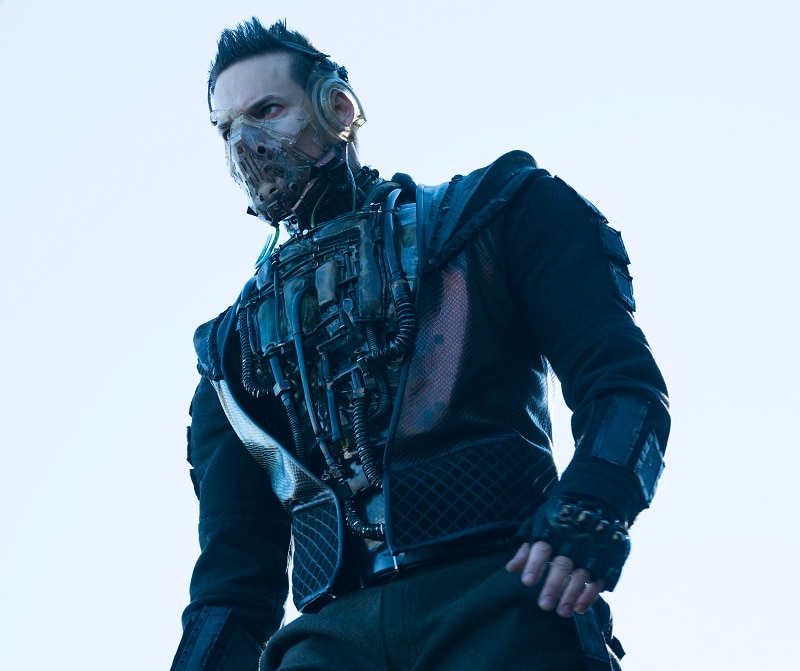
Finally, as far as television is concerned, in Season 5 of Gotham, Bane was introduced with the real name of Eduardo Dorrance, and with a background that combines his history in the comics with his role in The Dark Knight Rises. There, he is played by Shane West, a multi-ethnic actor with Cajun French and British-Portuguese roots.
But hey, these are all just interpretations of the source material, so let’s talk about the comics. Here’s what we know.
Bane’s father was a man named Sir Edmund Dorrance, a British military officer who defects from his homeland to become an international mercenary, working with revolutionary cells throughout the world for profit. But Dorrance would play his most important role when he joined up with an anti-communist rebel cell in the small nation of Santa Prisca, a Spanish colonized island in the north Caribbean. There, he struck up a brief romance with one of the local native rebels, leaving her with child and fleeing for his life when the revolutionaries failed. Unable to persecute Dorrance for his role in the rebellion, the Santa Priscan government held his infant son responsible for carrying out his father’s life sentence.
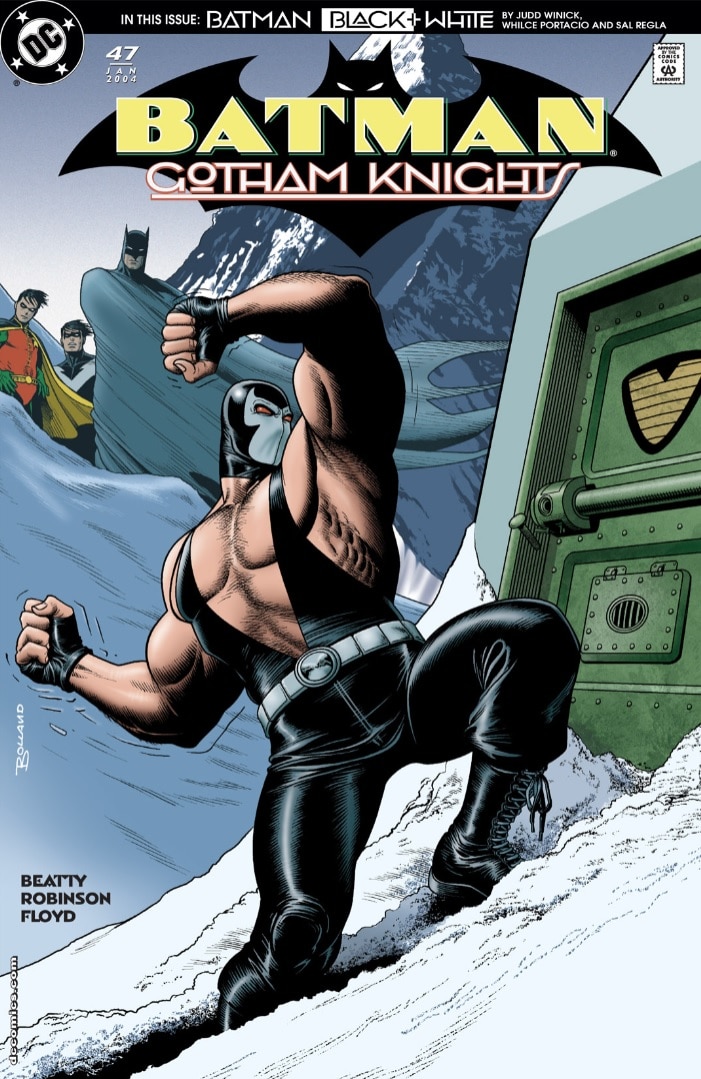
So… is Bane white, or is he Latino? By heritage, Bane is mixed race in origin. He has a white father, and a Latina mother. But as someone who never knew his father until he was an adult, who was born and spent his formative years in Pena Duro, the prison colony of Santa Prisca, and now as a man who still considers Santa Prisca his home, Bane is Latino by nationality as well.
To see the fullest accounting of Bane’s true origin for yourself, I would recommend reading Batman: Gotham Knights #47-49, “Veritas Liberat.”
ROBIN REBIRTH
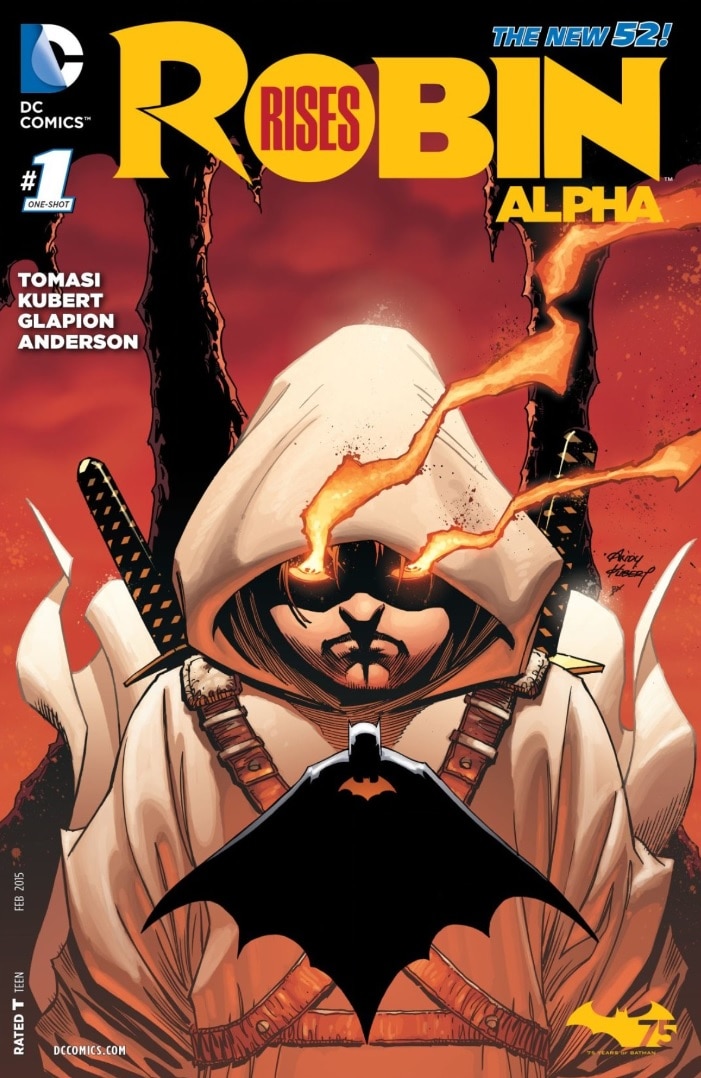
Awesome_Squid asks:
“When in relation to other stories did Damian get resurrected by Batman if Damian didn’t appear in ‘Endgame’ when Batman ‘died,’ but was alive before Bruce Wayne returned in ‘Superheavy’ ?”
The exact sequence of events when it comes to comic book continuity can be difficult to parse, especially when it comes to the lives of characters as prolific as Batman and his closest allies. Batman can be on as many as a dozen completely different adventures on any given month of publication, and it’s often up to the reader’s best logic or suspension of disbelief to sort them out.
With that in mind, let’s take a look at what was going on in Batman’s world during the month that Damian was resurrected. Damian’s resurrection occurs in Robin Rises: Alpha #1, a special finale issue of the “Robin Rises” story arc which returned Damian to life. The issue was published in December, 2014.
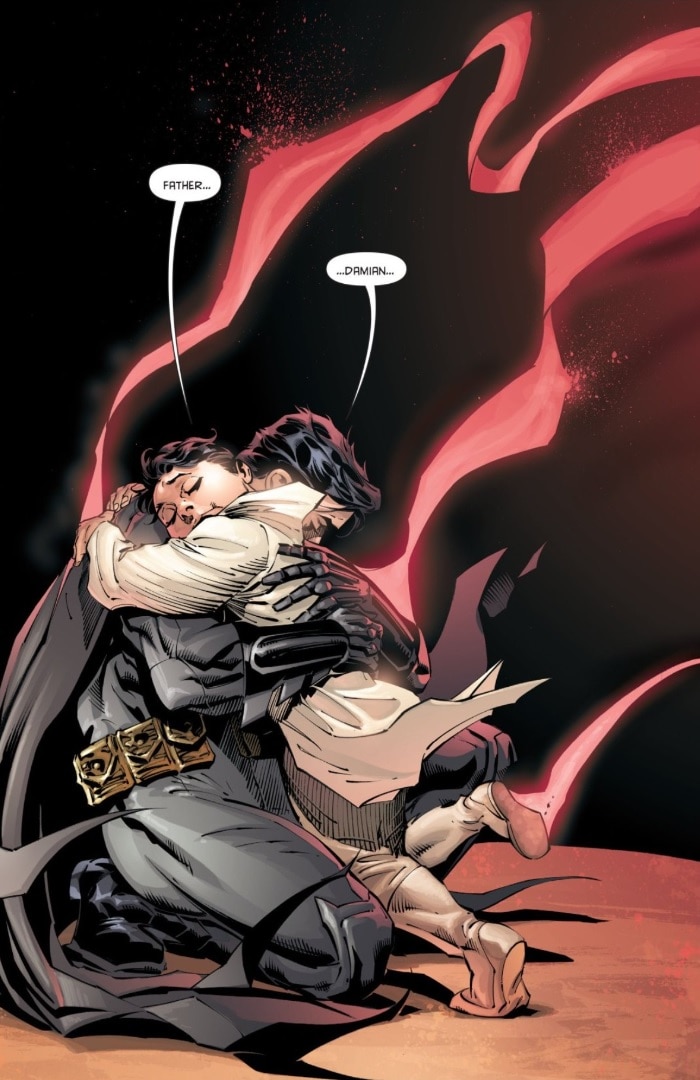
During that month, we also saw Batman #37 (the second issue of the ‘Endgame’ story arc), and the ongoing publication of Batman Eternal, as well as its spinoff miniseries, Arkham Manor. Batman Eternal and Arkham Manor both contain storylines which feature the character of Eric Border, Joker’s secret persona as an Arkham orderly. Joker reveals himself to have been Border all along during the events of ‘Endgame,’ so it stands to reason that both of those stories take place before ‘Endgame’ begins. Catwoman, too, was tied into Eternal at the time, placing it before ‘Endgame.’ With so many of the other Batman titles at the time tied to a pre-’Endgame’ status quo, we can also assume that the concurrent issue of Batman and Robin was also set before the ‘Endgame’ event, where the story of Damian’s resurrection and its aftermath was being told even as Joker plagued Gotham in the core Batman title. Therefore, we may assume further that Damian’s resurrection took place before ‘Endgame’ began.
If this is true, then within your question, there’s another valid one: where WAS Damian during ‘Endgame?’
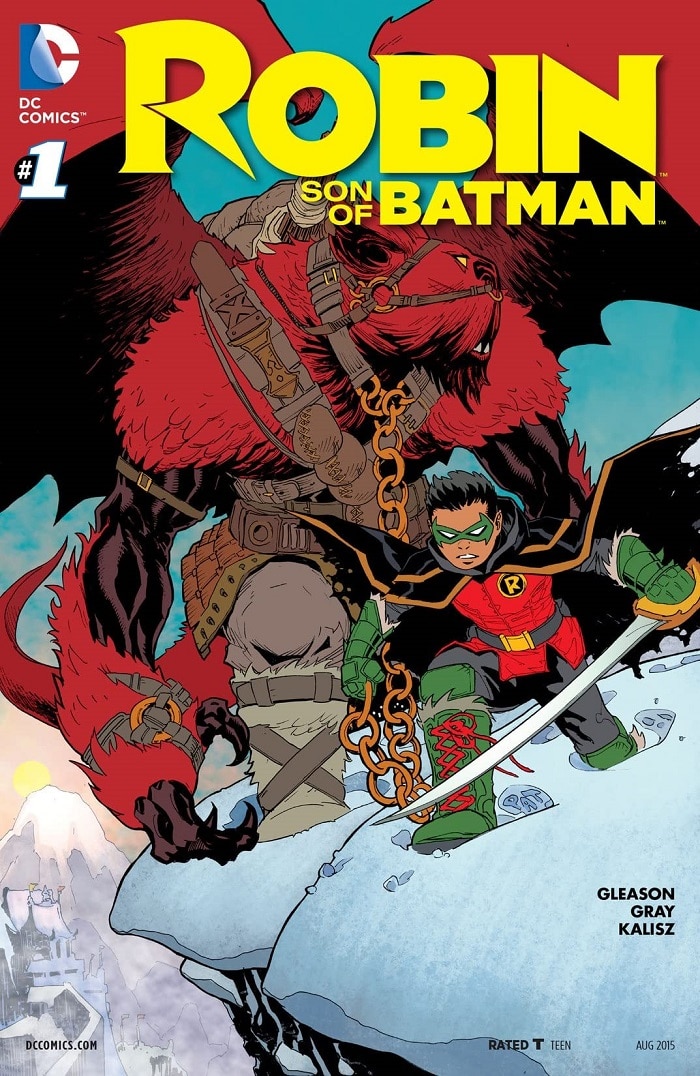
The answer to that comes a few months after ‘Endgame’s’ publication, with the launch of Patrick Gleason’s Robin: Son of Batman. This series picks up narratively where Gleason and Tomasi’s Batman and Robin series left off, with a newly resurrected Damian trying to figure out his own place in the world while reconciling with the baggage of his past. The first issue of Robin: Son of Batman begins in media res, where we find Damian in Bialya with his colossal dragon-bat, Goliath. It’s clear from context, then, that Damian’s quest did not BEGIN when Robin: Son of Batman #1 was published, but some time before.
I therefore would posit that Damian’s resurrection arc occurs right before ‘Endgame,’ with ‘Endgame’ itself taking place while Damian was beginning to strike out on his own in Robin: Son of Batman.
“Sorry, Dad, can’t help you fight the Joker. I’m too busy flying around the world on my giant bat undoing all the mistakes I made during my upbringing with the League of Assassins.”
WILDCATS CAN’T BE BROKEN
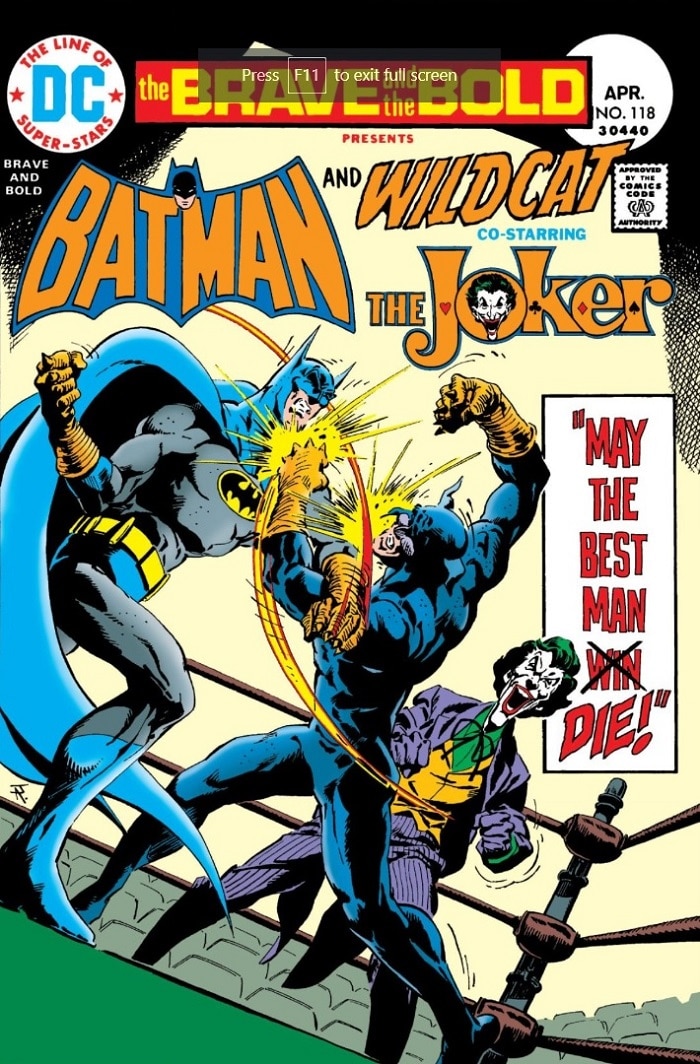
LeonardoMyst asks:
“Whatever happened to the Earth-1 Wildcat that appeared in The Brave and the Bold issues during the ‘70s?”
Assigned as a Golden Age hero of Earth-Two from the time that the concept itself was established, until the folding in of both realities after Crisis on Infinite Earths, the rarely discussed Wildcat of Earth-One only made six appearances between 1970 and 1976, and was never heard from again. Five of these six appearances were written by Bob Haney, one of the main writers of the Bronze Age team-up book The Brave and the Bold.
Part of what made Haney’s tenure on Brave and the Bold so exciting and unpredictable was its very “throw it against the wall and see what sticks” approach to the team-ups which formed the core of the book. In 1970, Haney got the idea that he might be able to get some interesting adventures out of Wildcat and Batman. But in order to ground the stories of these two street level crime fighters without dealing with the contrivance of the multiverse, he’d have to invent a new counterpart of the character who wasn’t hanging out with the JSA. After all, there were Earth-2 versions of Superman, Batman and Wonder Woman. Why not an Earth-1 Wildcat?
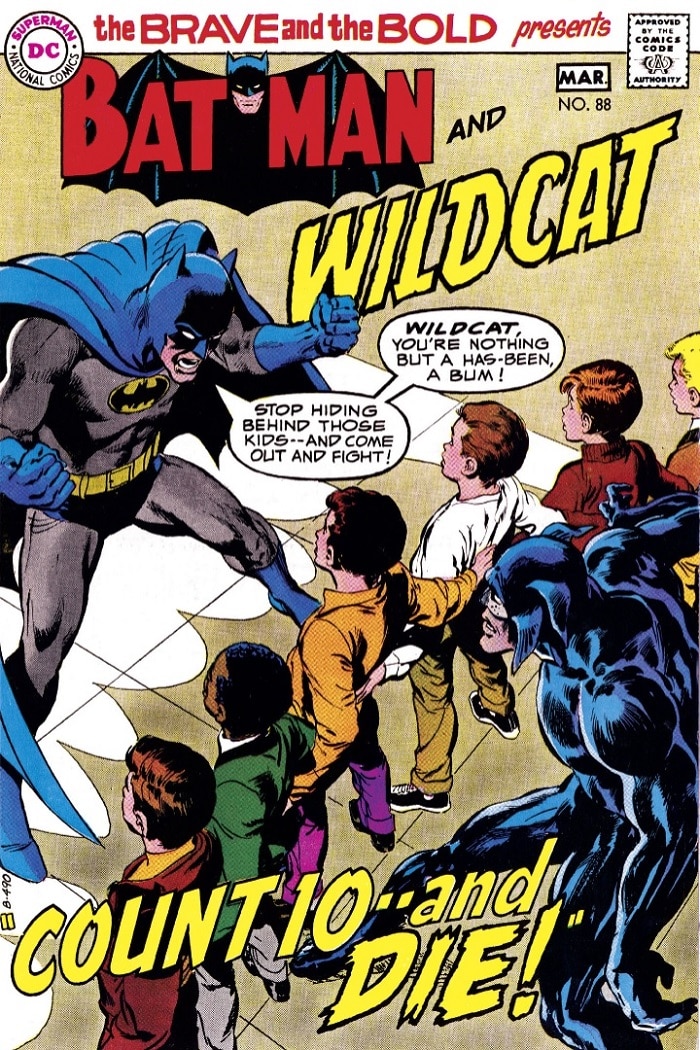
When asked about the process of how he chose team-ups in a 1997 interview, Haney said:
“Every month, we’d look at the sales figures and if he was teaming with Wildcat, how did it do? Well, if it did all right, we’d throw in Wildcat again. So, it was a very cold, calculating thing.”
With that in mind, it seems like the Batman/Wildcat team-up was popular enough after its first instance in Brave and the Bold #88 to revisit about once a year, but after a certain point interest dropped off. So quite unceremoniously, the Earth-One Ted Grant was dropped after one last Batman team-up in Brave and the Bold #127, with no real sense of finality. It can only be assumed he continued to operate in Gotham City up until Crisis, when Batman’s favorite boxing coach and the firebrand of the JSA were melded to be one and the same.
THE DARK KNIGHT STRIKES OUT

RainmanMP117 asks:
“What comic book issues have Clark Kent playing baseball with Bruce Wayne?”
The earliest depictions of Batman and Superman playing baseball together was on the covers of 1941’s World’s Finest Comics #3 and 1944’s World’s Finest Comics #15. But in those early days, the action on the cover of these anthology comics rarely depicted anything that occurred within the comic itself. Go through each issue and a baseball is not to be seen within.
In 1976’s DC Super-Stars #10, the Justice League is baited into a game against their greatest villains when Tigress and Sportsmaster hold a stadium of fans hostage with an ultimatum: win and they go free; lose and they die. In that game, Superman pitched for the League, and Batman was his catcher. This game was recreated for the cold open of the 2011 Batman: The Brave and the Bold episode “Triumverate of Terror!”
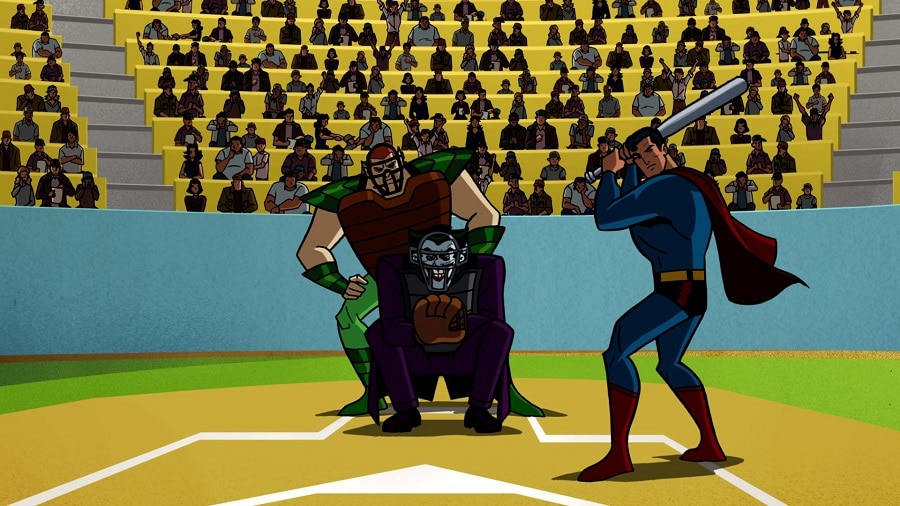
For a short story in Superman/Batman Secret Files 2003, Jeph Loeb and Tim Sale ground the characters’ first-ever meeting in baseball. When Young Bruce and Alfred’s Rolls Royce breaks down while traveling through Smallville, local farmer Jonathan Kent comes out to help Alfred with his car troubles while young Clark invites Bruce to come play a game with him. This encounter proves charming enough to be recalled 10 years later, in 2013’s Batman/Superman #3.
But Bruce and Clark’s most recent encounter on the baseball diamond was in 2017’s Batman #37, “Double Date.” In an issue which has become a favorite among many readers of Tom King’s epic run on the title, while out for a night on the town with Selina and Lois, Batman stands over home plate at the issue’s climax to prove once and for all that he can hit a pitch thrown by Superman.
LEAVING ON RED
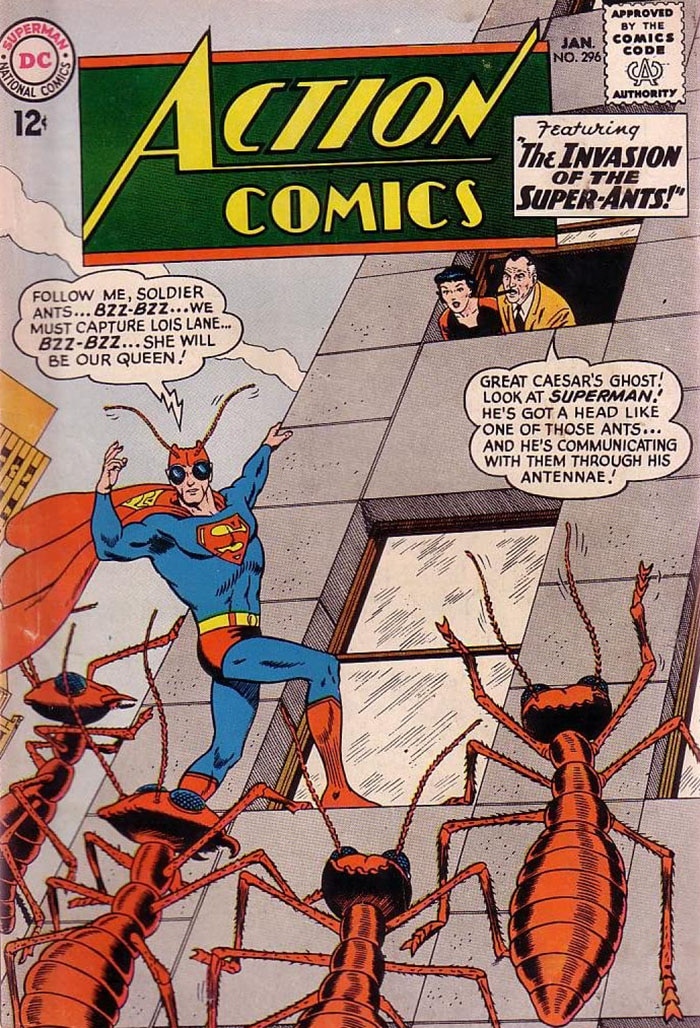
Hunter asks:
“What are your top 10 favorite Red Kryptonite mutations?”
Here’s the thing about Red Kryptonite: it’s hilarious. You know it, I know it, and Superman’s Silver Age writers FOR SURE knew it. When Red Kryptonite comes into play, absolutely anything can happen to Superman, and the weirder it gets, the better. So I thought about this one for a very long time, and here’s my personal canon for the top ten.
#10. In the Season 3 Super Friends episode “Terror from the Phantom Zone,” exposure to Red Kryptonite gives Superman two extra arms. Maybe not the most inspired effect, but the first really notable wacky Red K mutation in animation.
#9. In Action Comics #317, exposure to Red Kryptonite gave Superman “Rainbow Face,” an effect which caused his face to change color with his mood. This one’s really only on the list because I like to say “Rainbow Face.”
#8. In 1946’s Superman #139, Red Kryptonite gives Superman uncontrollable hair growth, most prominently an unsightly beard that Lois is NOT into. This sets an early precedent for Red K not just affecting Superman’s abilities, but also his social life.
#7. In Action #296, Red K gives Superman the head of a giant ant, and control over a giant ant army. Honestly this list would be invalid if I didn’t include this one SOMEWHERE.
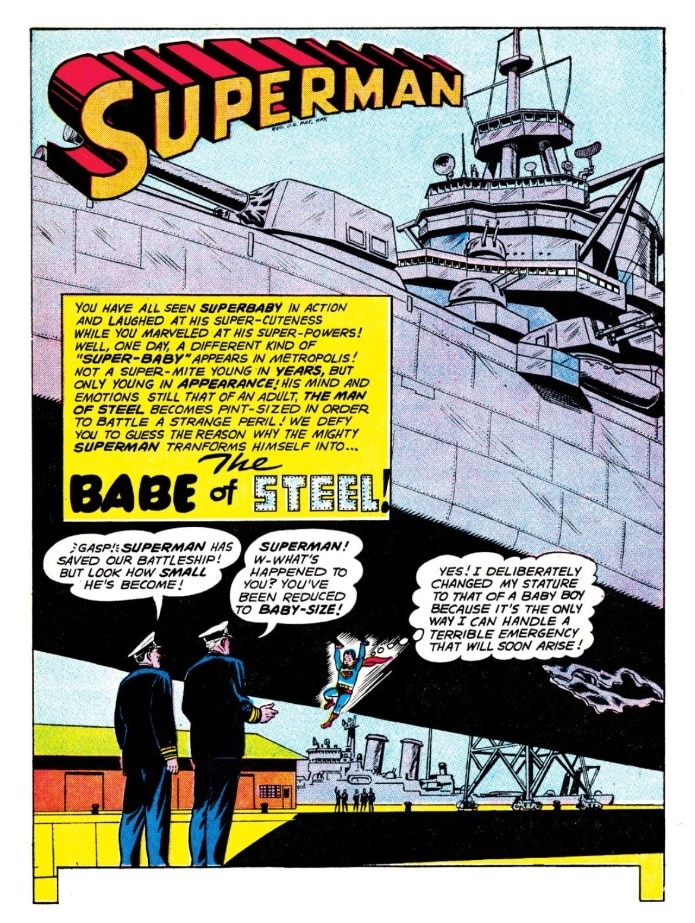
#6. In Action #284, Red K reverts Superman to the physical body of a toddler, but with his adult human brain. As you can see, the 200s in Action and Superman are really where you start getting the primo stuff.
#5. In Superman #226, Red K makes Superman grow to the size and adopt the manner of King Kong, climbing skyscrapers and swatting at planes. One imagines Superman flashes back to this incident every time he has to fight Titano.
#4. In Action #283, one of my personal favorite wacky Silver Age stories, exposure to Red K causes Superman to uncontrollably breathe fire from his mouth, forcing him to stay mute at all times until it wears off. Later, he gets the ability to grant wishes. You know, a perfectly natural progression of power scaling.
#3. Here’s the only one on the list which doesn’t affect Superman himself: in the Krypto the Superdog animated series episode “The Living End,” Red Kryptonite exposure grants independent sentience to Krypto’s own tail. Hoping that makes its way to HBO Max soon.
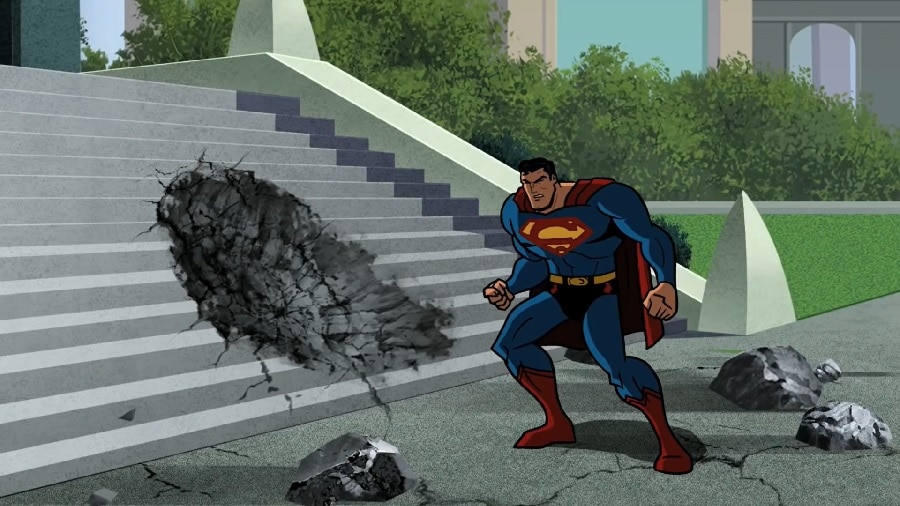
#2. The single most common effect of Red Kryptonite through the ages is not a physical transformation, but a change in personality—notably, it turns kind-hearted Kryptonians like Clark and Kara into big ol’ jerks. The greatest expression of this phenomenon in my opinion is in “Battle of the Superheroes!”, a Batman: The Brave and the Bold episode which pays tribute to a wide variety of classically inexplicable Silver Age Superman stories in rapid succession. Honestly if you’d like to read or watch one Red Kryptonite story on this list yourself, this is the one I’d recommend.
#1. Here’s one I think about all the time. In Action Comics #290, Red Kryptonite strips Superman of all his powers…but only on the left side of his body. The right continues to operate as normal. I’ll be honest, having a superhero who worked like this full-time would be kind of cool. Get on it, Phillip Kennedy Johnson!
That’s all the time we have together this month. But you can join me to swap inquiries and gather data all day and every day in the DC Comics community, and who knows? I may just stop by in between columns to give you an answer myself. After all, it never hurts to ASK… THE QUESTION.
Well, you heard what he said! If you have a question about the DC Universe that you'd love to get answered, you can head on over to the DC Community and ask it here.
Alex Jaffe is the author of our monthly "Ask the Question" column and writes about TV, movies, comics and superhero history for DCComics.com. Follow him on Twitter at @AlexJaffe and find him in the DC Community as HubCItyQuestion.
NOTE: The views and opinions expressed in this column are solely those of Alex Jaffe and do not necessarily reflect those of DC Entertainment or Warner Bros.

